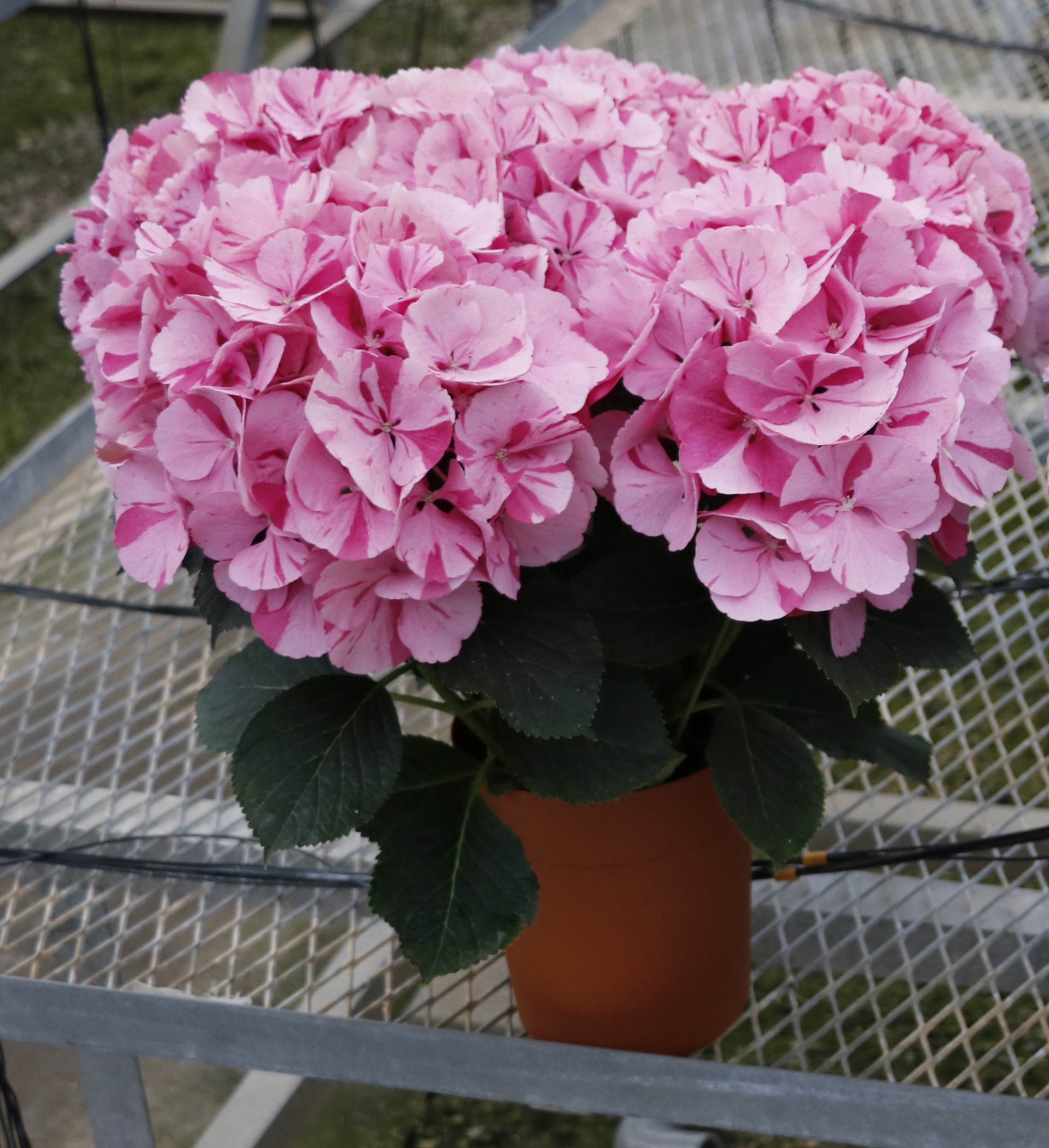Dancing Angel
| Denomination: | 'Dancing Angel' |
|---|---|
| Botanical Name: | Hydrangea macrophylla |
| Applicant/Holder: |
Shiobara, Shigeo 2-14-3 Shimonodo Honjo City, Saitama 367-0063 Japan |
| Breeder: |
Shigeo Shiobara, Honjo City, Saitama, Japan |
| Agent in Canada: |
BioFlora Inc. 38723 Fingal Line R.R. #1 St. Thomas, Ontario N5P 3S5 Canada Tel: 519-317-7511 |
| Application Date: | 2012-11-30 |
| Application Number: | 12-7806 |
| Grant of Rights Date: | 2019-10-31 |
| Certificate Number: | 6084 |
| Date rights surrendered: | 2020-10-31 |
Variety Description
Varieties used for comparison: 'Pink Candy' and 'Mrs. Kumiko'
Summary: The inner side of the sepal of the sterile flower of 'Dancing Angel' has a purple red secondary colour distributed as a diffused pattern throughout while the sepal of 'Pink Candy' and 'Mrs. Kumiko' does not have a secondary colour. The margin incisions on the sepal of the sterile flower of 'Dancing Angel' are of medium depth while the incisions of the sepal of 'Mrs. Kumiko' are deep.
Description:
PLANT: spreading growth habit, medium natural height
STEM: previous years branch is brown, flowering branch green, medium number of lenticels, purplish brown lenticels
LEAF BLADE: elliptic shape, acuminate apex, acute base, lobing absent, medium depth incisions of margin, medium length, medium width, dark green upper side, no variegation, no glossiness of upper side
FLOWERING: begins mid-season
INFLORESCENCE: globular shape, medium to large diameter, inconspicuous or slightly conspicuous fertile flowers, no fragrance
STERILE FLOWER: many, medium diameter of calyx, single type, medium degree of overlapping of sepals, incisions of margin present on all sepals, always 4 sepals per flower
SEPAL OF STERILE FLOWER: medium depth incisions of margin, flat in cross-section
SEPAL OF STERILE FLOWER (INNER SIDE): light blue pink (RHS 62B), secondary colour purple red (RHS 61C), distribution of secondary colour is splashed pattern, medium sized area of secondary colour
PETAL OF FERTILE FLOWER: light crimson
Origin & Breeding History: 'Dancing Angel' was discovered as a naturally occurring mutation of Hydrangea macrophylla variety 'Pink Candy' in April 2000 and developed by the breeder, Shigeo Shiobara of Honjo City, Saitama, Japan. 'Dancing Angel' was selected for its upright, mounded plant growth habit, dark green foliage which becomes variegated in autumn with dark yellow and purple colours, large mophead-type inflorescences with pink and red purple bicoloured flowers. Asexual reproduction by softwood cuttings of 'Dancing Angel' was first conducted in June 2000, in Honjo City, Saitama, Japan.
Tests & Trials: The detailed description of 'Dancing Angel' is based on a translation of the UPOV report of Technical Examination, application number 20627, purchased from the Plant Variety Protection Office of the Ministry of Agriculture, Forestry and Fisheries in Japan. The trials were conducted in Saitama, Japan and an on-site examination was conducted by the Plant Variety Protection Office in 2009. The colour determinations were made using the 2001 Royal Horticultural Society (RHS) Colour Chart.
Click on image for larger view

Hydrangea: 'Dancing Angel'
Click on image for larger view

Hydrangea: 'Dancing Angel' (left) with reference varieties 'Pink Candy' (centre) and 'Mrs. Kumiko' (right)
- Date modified: